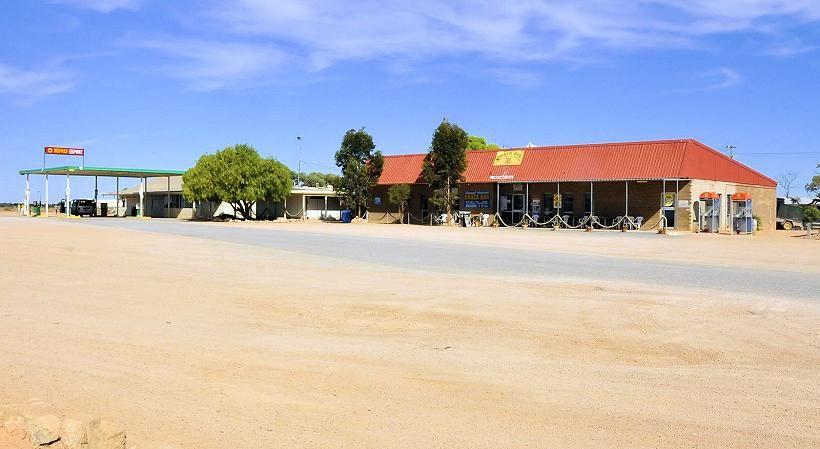DESCRIPTION
Originally an Aboriginal mission station, this small settlement is located on the Eyre Highway 280km
from the W.A./S.A. border.
49km from the roadhouse is the Eyre Bird Observatory which opened in 1978. Over 230 species of birds have been sighted. There are
camping facilities at the observatory but it is a difficult place to reach.
The Observatory sits on the site used by
Edward Eyre
to recuperate during his expedition from the east. Known as Eyre's Sand patch, the party found water here after not finding
any other source for the previous 7 days.
When the east - west telegraph line went through it was this site again that was used, this time for a repeater station that
continued to operate until 1927.
The turn off to the bird observatory is 17 kilometres east of Cocklebiddy. The road in is for 4 wheel drive vehicles only. Although
visitors are welcome, fees are
charged for entry and also for a pick up service for those who do not have 4x4 vehicles. The observatory can be contacted on
(08) 9039 3450.
The district is widely known for its large caves and in 1983 a French team set a record for the longest cave dive in the world.
Later that year an Australian team
beat the French record by 280 metres. This record was beaten in 1995 by Christopher Brown (another Australian) who went a mere
20 metres further.
Many of the caves are filled with crystal clear water and footage taken inside the caves makes
it seem as though the divers are floating in air. Originally it was thought that the caves would be a good source of water, but
tests showed that under a thin layer
of fresh water was a lot of highly saline, and therefore useless - water.
At 6 kilometres long, Cocklebiddy Cave is the longest cave diving cave so far discovered in the world. Although this cave is
the most famous in the area, there are many more
caves scattered through what is the largest area of limestone in the world. Caves on the Nullarbor are not considered safe
enough for general public use. Entry to the caves
is restricted to well organised groups with proper safety equipment.
Fishing from the beach near Cocklebiddy Cliffs is also popular with those who are prepared to make the trip. Nice big pink
snapper can be taken from the beach and rumours of large mulloway also abound.
Cocklebiddy hosts hole 10 of the longest golf course in the world. Check out more information about the course at
Nullarbor Links Website
HISTORY
This area was originally home to the Mirning Aboriginal language group.
Dutch explorer Pieter Nuyts sailed along the coast in the Gulden Zeepaerdt (Golden Seahorse) in 1627.
The first European explorer to travel overland was
Edward John Eyre
who came through the area in 1841.
In 1877 a telegraph station was constructed and a second station opened in 1897. The telegraph station remained in use until 1927.
Arubiddy Station was established in 1961 north of Caiguna. The station relies on bore water that is
brought to the surface from 150 metres underground.
The Eyre Bird Observatory was opened in 1978.
TALL TALES AND TRUE
No information for this section yet. If you know of something we can add here please contact us and let us know.
VIDEO
PROBLEM PLAYING THESE ON FIREFOX?
Turn off Enhanced Tracking Protection
Click the shield icon left of the URL near the top left
Slide Advanced Tracking Protection to OFF
Check out our other VIDEOS
NEW **** CLICKABLE VIDEO MAPS **** NEW
MattSkinnah Youtube Channel
OTHER INFORMATION
ATTRACTIONS
Cocklebiddy caves, Twilight Cove, Eyre Bird Observatory
BUILDINGS OF NOTE
Unknown.
ELECTORAL ZONES
State : Eyre
Federal : O'Connor
OTHER INFO.
Postcode : 6443
Local Government : Shire of Dundas
PHOTOS
Sadly something has disabled these photo sections on our website.
We don't know what it is or how to fix it.
Aplolgies for the inconvenience. We will work on finding a way round it.










